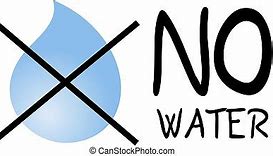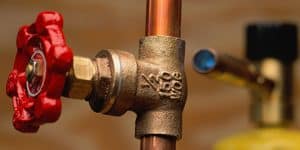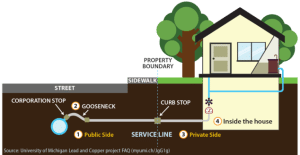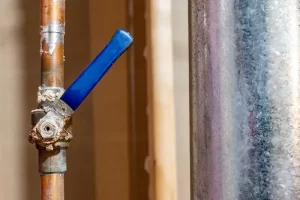
No water in the house? Here’s how to check:
Has this ever happened to you? You wake up in the morning, go to the bathroom to wash your face, turn the faucet, and… nothing. It’s not a great feeling. Before you can get your water running again, you have to figure out why it stopped in the first place. Here are some step-by-step instructions you can follow to figure out what went wrong and why there is no water in the house!
Check Another Faucet
If other appliances still work fine, then the reason your bathroom sink won’t is that there’s something wrong with the faucet. It could be clogged, dislodged, bent, broken, or something even
simpler–the sink valve under the sink may just be closed!
Worst case scenario, you’ll have to replace the faucet, but that’s actually pretty easy if you know how.
Try Cold Water
If the cold water seems to flow fine and the water is not getting hot that could be because your water heater is probably malfunctioning. Heater issues can happen for a couple of reasons–it could simply be turned off or unplugged, or sediment buildup could be blocking the heating element. The heater might even be leaking.
Try flushing the heater and then giving it time to heat it back up. If flushing doesn’t work, you may have to replace the heater.

Check Your Water Main
If you can’t get any of the water in your house to work, make sure your main is open. If the mainline’s valve is closed, nothing can flow through the mainline and into any of the supply lines in your home.
Open the valve all the way, and double-check your faucets.

Call Your Water Company
It’s possible that this problem isn’t your problem at all. Sometimes supply companies need to turn off the water to specific areas in order to perform maintenance.
Call your supply company and ask if they’ve turned the water off in your area.
Check For a Stuck Valve
Your water will struggle to move past the valve’s restricted opening, losing pressure in the process. If too much pressure is used to move past the restricted opening, your water might not have enough to make it all the way to your faucets.
Open the valve if possible. You may have to use pliers or a wrench. Just be careful not to strip or otherwise damage the valve.
Check For Leaking or Denting
Pipe leaks can steal pressure, too, especially pipe leaks near the mainline. Starting in your basement, follow your plumbing’s water supply lines. Look for condensation, dripping, leaking, and other signs of rupture. A significant enough leak or dent in a pipe could keep any water from getting where it’s supposed to.
Unclog the Pipes
Sediment buildup or corrosion can restrict flow through your supply pipes. Sediment causes the same flow and pressure problems leaks or stuck valves can. If your pipes are old or made of outdated material, it’s possible that heavy metal and lime deposits or rust and corrosion have clogged them up from the inside.
A professional can use video inspection and hydro-jetting equipment to clean all that gunk out of your pipes.
If none of these seem to be the problem, never fear! Give us a call and we’ll get your water flowing again right away.













